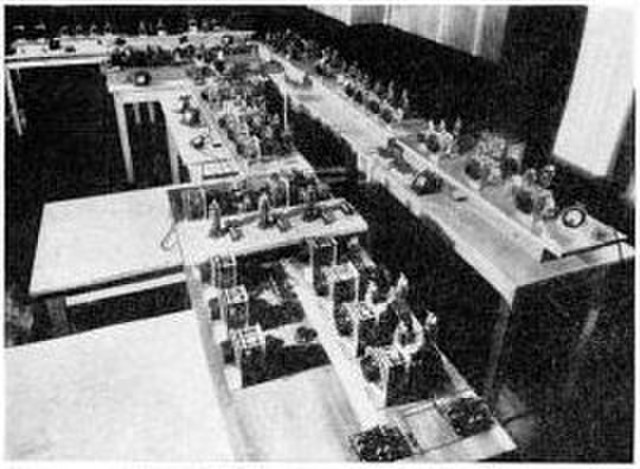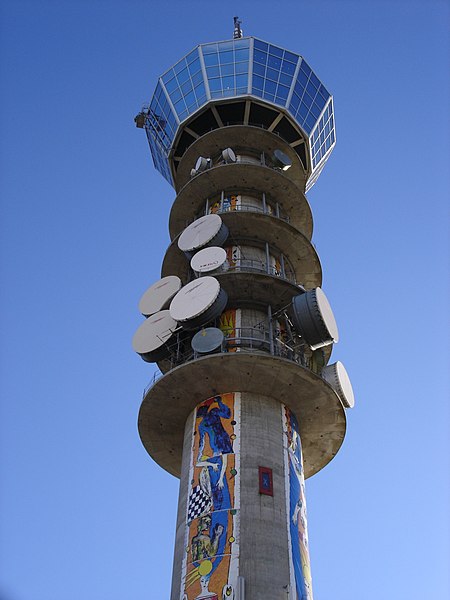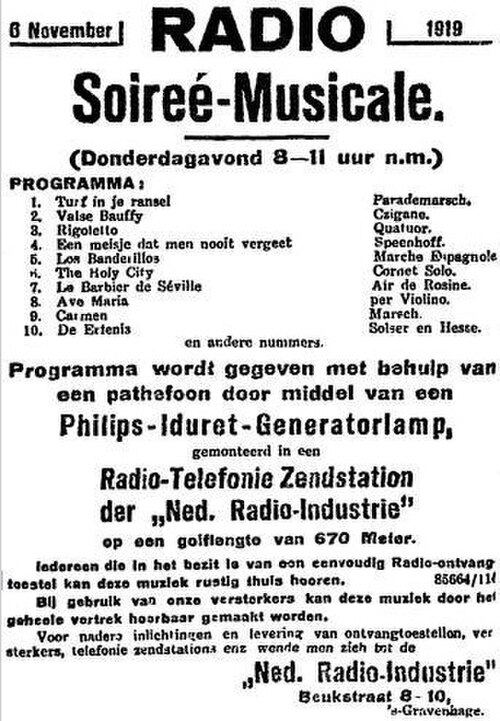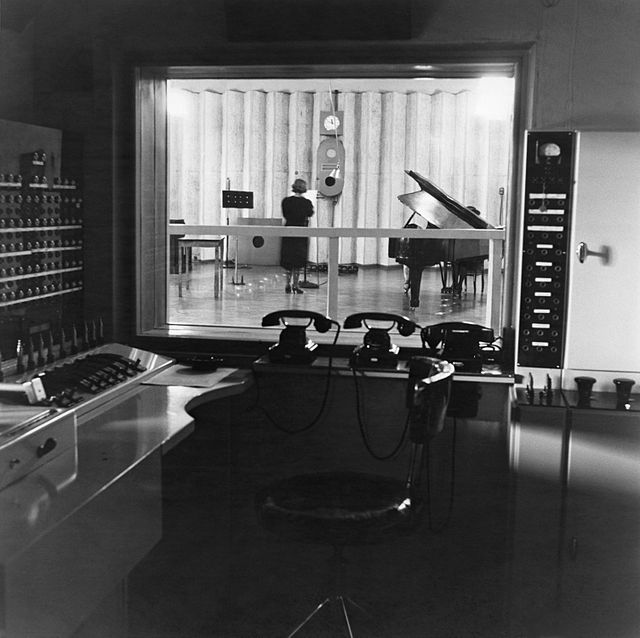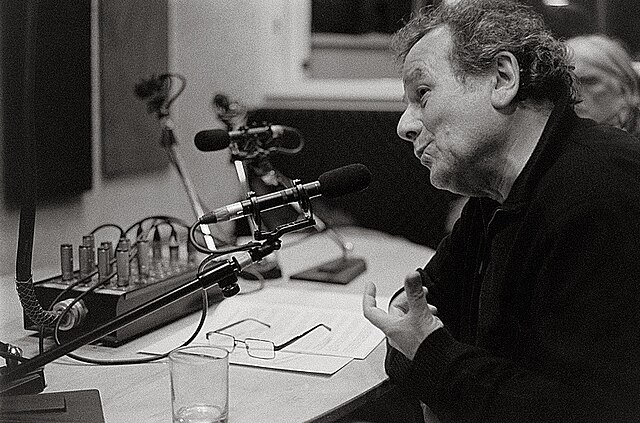FM broadcasting is a method of radio broadcasting that uses frequency modulation (FM) of the radio broadcast carrier wave. Invented in 1933 by American engineer Edwin Armstrong, wide-band FM is used worldwide to transmit high-fidelity sound over broadcast radio. FM broadcasting offers higher fidelity—more accurate reproduction of the original program sound—than other broadcasting techniques, such as AM broadcasting. It is also less susceptible to common forms of interference, having less static and popping sounds than are often heard on AM. Therefore, FM is used for most broadcasts of music and general audio. FM radio stations use the very high frequency range of radio frequencies.
A commercial 35 kW FM radio transmitter built in the late 1980s. It belongs to FM radio station KWNR, in Henderson, Nevada, and broadcasts at 95.5 MHz.
FM has better rejection of static (RFI) than AM. This was shown in a dramatic demonstration by General Electric at its New York lab in 1940. The radio had both AM and FM receivers. With a million-volt arc as a source of interference behind it, the AM receiver produced a roar of static, while the FM receiver clearly reproduced a music program from Armstrong's experimental FM transmitter in New Jersey.
Crossed-dipole antenna array of station KENZ's 94.9 MHz, 48 kW transmitter on Lake Mountain, Utah. It radiates circularly polarized radio waves.
Armstrong's first prototype FM broadcast transmitter, located in the Empire State Building, New York City, which he used for secret tests of his system between 1934 and 1935. Licensed as experimental station W2XDG, it transmitted on 41 MHz at a power of 2 kW.
Radio broadcasting is the broadcasting of audio (sound), sometimes with related metadata, by radio waves to radio receivers belonging to a public audience. In terrestrial radio broadcasting the radio waves are broadcast by a land-based radio station, while in satellite radio the radio waves are broadcast by a satellite in Earth orbit. To receive the content the listener must have a broadcast radio receiver (radio). Stations are often affiliated with a radio network that provides content in a common radio format, either in broadcast syndication or simulcast, or both. Radio stations broadcast with several different types of modulation: AM radio stations transmit in AM, FM radio stations transmit in FM, which are older analog audio standards, while newer digital radio stations transmit in several digital audio standards: DAB, HD radio, DRM.
Broadcasting tower in Trondheim, Norway
Advertisement placed on November 5, 1919, Nieuwe Rotterdamsche Courant announcing PCGG's debut broadcast scheduled for the next evening
Control room and radio studio of the Finnish broadcasting company Yleisradio (YLE) in the 1930s.
Use of a sound broadcasting station




